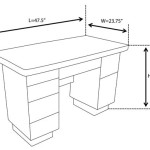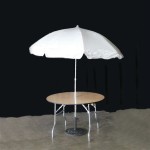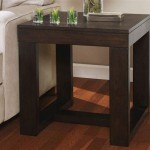```html
Building A Vegetable Garden Box On Concrete
Cultivating fresh vegetables is a rewarding endeavor, offering access to healthy, homegrown produce. However, limited yard space or the prevalence of concrete surfaces can present initial obstacles. Building a vegetable garden box on concrete provides a viable solution, allowing individuals to engage in gardening even in environments where traditional soil-based gardening is not feasible. This article details the process of constructing a raised garden bed suitable for placement on concrete, outlining key considerations and providing detailed instructions.
Planning and Preparation
The initial phase involves meticulous planning and preparation. This encompasses determining the ideal location for the garden box, selecting appropriate materials, and calculating the necessary dimensions. Each of these aspects plays a crucial role in the success and longevity of the garden.
Location Selection: The placement of the garden box is paramount. Vegetables require ample sunlight – typically a minimum of six to eight hours per day. Observe the area throughout the day to identify the location that receives the most direct sunlight. Consideration should also be given to proximity to a water source. Easy access to water is essential for regular watering, reducing the effort required to maintain the garden. Avoid locations prone to water pooling or standing water, as excessive moisture can damage the garden box and harm the plants. Lastly, consider the prevailing wind conditions. If the location is particularly windy, consider installing a windbreak to protect delicate plants.
Material Selection: The choice of materials significantly impacts the durability and aesthetic appeal of the garden box. Untreated lumber, such as cedar or redwood, is naturally rot-resistant and a popular choice. These woods are less likely to leach harmful chemicals into the soil, making them safer for growing edible plants. Pressure-treated lumber can be used, but it's crucial to line the interior of the box with a heavy-duty plastic liner to prevent chemicals from leaching into the soil. Recycled plastic lumber is another option. It is highly durable, resistant to rot and insects, and requires minimal maintenance. However, it can be more expensive than traditional lumber. When selecting materials, consider the overall budget, desired aesthetic, and long-term durability. Ensure all screws and hardware are galvanized or stainless steel to prevent rust and corrosion, especially in outdoor environments.
Dimension Calculation: The dimensions of the garden box should be determined based on the available space, the types of vegetables to be grown, and the gardener's physical capabilities. A depth of at least 12 inches is generally recommended for most vegetables, allowing sufficient space for root development. Wider boxes are often preferable for accommodating a greater variety of plants, but it's important to ensure that the width is manageable, allowing easy access to all parts of the garden for planting, weeding, and harvesting. For ease of access, a width of no more than 4 feet is generally advisable. Consider the mature size of the vegetables being planted when determining the spacing within the box to avoid overcrowding. Draw a sketch of the garden box with all dimensions clearly labelled to facilitate accurate cutting and assembly.
Constructing the Garden Box
Once the planning phase is complete, the next step involves physically constructing the garden box. This requires accurate cutting of the materials, assembly of the frame, and the addition of any necessary liners or drainage provisions. Precision and attention to detail are crucial for ensuring a sturdy andFunctional garden box.
Cutting the Lumber: Using the dimensions determined during the planning phase, carefully cut the lumber to the required lengths. A circular saw or hand saw can be used, but a circular saw will provide cleaner and more accurate cuts, especially for larger pieces of lumber. Use a speed square to ensure all cuts are perfectly square, as this will aid in the assembly process. Wear safety glasses and hearing protection when operating power tools. After cutting, sand the edges of the lumber to remove any splinters and create a smoother surface.
Assembling the Frame: Begin by assembling the sides of the garden box. Use wood screws to securely join the corners. Pre-drilling pilot holes will prevent the wood from splitting and make it easier to drive the screws. Ensure the corners are square by using a carpenter's square or level. For larger boxes, consider adding internal bracing to provide additional support and prevent the sides from bowing outwards when filled with soil. The bracing should be positioned at regular intervals along the length of the box. Attach the bottom of the box if desired. While not always necessary when placed on concrete, a bottom can provide additional support and prevent weeds from growing up into the box. If adding a bottom, ensure it is adequately supported with additional bracing.
Adding a Liner (Optional): If pressure-treated lumber is used, or if the gardener wishes to further protect the wood from moisture, a liner can be added to the interior of the box. A heavy-duty plastic liner is the most common option. Cut the liner to size, allowing for some overlap at the top edges of the box. Staple the liner to the interior of the box, ensuring it is securely attached. Trim any excess liner material. The liner will help to prevent the wood from coming into direct contact with the soil and moisture, extending the life of the garden box. Consider adding drainage holes to the bottom of the liner to prevent water from accumulating in the box. An alternative to a plastic liner is landscape fabric, which allows water to drain while still preventing soil from contacting the wood.
Addressing Drainage: While the concrete base prevents direct contact with the ground, proper drainage is still essential to prevent waterlogging the soil and damaging plant roots. Adding a layer of gravel or horticultural drainage material to the bottom of the box before filling with soil can significantly improve drainage. This layer will allow excess water to drain away from the roots, preventing root rot and other moisture-related problems. The drainage layer should be at least a few inches thick. If a liner is used, ensure drainage holes are incorporated to allow water to escape. Monitor the moisture levels in the soil regularly and adjust watering practices accordingly.
Filling and Maintaining the Garden Box
The final stage involves filling the garden box with appropriate soil and implementing ongoing maintenance practices to ensure the health and productivity of the garden. The choice of soil and consistent maintenance are critical for successful vegetable cultivation.
Selecting the Right Soil: The soil used in the garden box should be a well-draining, nutrient-rich mix specifically formulated for vegetable gardening. Avoid using garden soil directly from the ground, as it is often too dense and may contain weed seeds and pests. A mixture of topsoil, compost, and peat moss or coco coir provides an ideal balance of drainage, aeration, and nutrient retention. Compost is an excellent source of organic matter, providing essential nutrients and improving soil structure. Peat moss and coco coir help to retain moisture while also improving drainage. The specific ratio of these components may vary depending on the types of vegetables being grown. Research the specific soil requirements of the chosen vegetables and adjust the mix accordingly. Before filling the box, thoroughly mix the soil components to ensure a uniform blend.
Planting and Watering: Once the box is filled with soil, planting can begin. Follow recommended spacing guidelines for each type of vegetable to ensure adequate airflow and sunlight penetration. Water the plants thoroughly after planting to help settle the soil and encourage root development. Regular watering is essential, but avoid overwatering, which can lead to root rot. The frequency of watering will depend on the weather conditions, the type of soil, and the specific water requirements of the plants. Check the soil moisture regularly by inserting a finger into the soil. If the top inch of soil feels dry, it's time to water. Water deeply and thoroughly, allowing the water to soak into the soil and reach the roots. Consider using a soaker hose or drip irrigation system to deliver water directly to the roots, minimizing water waste and reducing the risk of fungal diseases.
Ongoing Maintenance: Regular maintenance is crucial for maintaining the health and productivity of the garden. This includes weeding, fertilizing, and pest control. Weeds compete with vegetables for nutrients and water, so it's important to remove them regularly. Hand-weeding is the most effective method, ensuring the entire root system is removed. Fertilize the plants regularly with a balanced fertilizer to provide essential nutrients. The frequency and type of fertilizer will depend on the specific needs of the vegetables being grown. Organic fertilizers, such as compost tea and fish emulsion, are excellent options. Monitor the plants regularly for signs of pests and diseases. Take appropriate action to control pests and diseases early to prevent them from spreading. Common pests include aphids, caterpillars, and slugs. Organic pest control methods, such as insecticidal soap and diatomaceous earth, are often effective. Consider crop rotation each season to prevent the build-up of soil-borne diseases and pests. Regularly amend the soil with compost to replenish nutrients and maintain soil health.
```
Raised Bed On Concrete Yes Or No Epic Gardening

How To Garden In Raised Beds On Pavement Tenth Acre Farm

How To Garden In Raised Beds On Pavement Tenth Acre Farm

How To Build A Raised Garden Bed On Concrete Patio Or Hard Surface Homestead And Chill

Cinder Block Raised Bed The Four Acre Farm

How To Create An Awesome Raised Garden Bed

Raised Bed Vegetable Garden Concrete Blocks Planter For Small Spaces

How To Garden In Raised Beds On Pavement Tenth Acre Farm

These Bricks Make Building Raised Garden Beds Simple Wirecutter

Gardening On Hard Surfaces Are Raised Garden Beds Concrete An Option Crate And Basket
Related Posts








